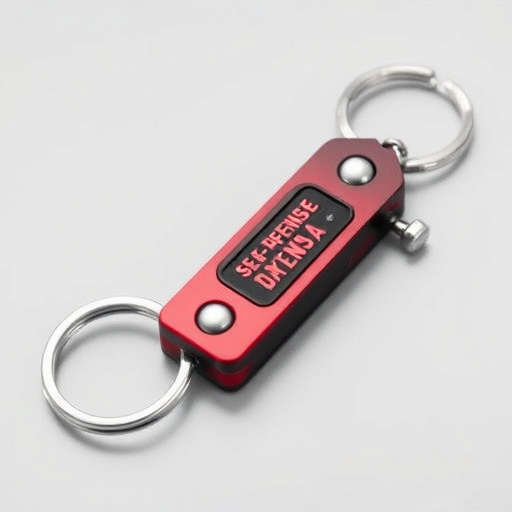Defining "compact keychain self-defense tools" legally depends on purpose, design, and harm potential, with varying state and local regulations in the US. These tools are legal if designed for personal safety and used reasonably, but users must research local laws to ensure compliance regarding blade length, spray capacity, and permitted substances. Opting for multi-functional, easy-to-operate tools that meet legal criteria is crucial.
In today’s diverse legal landscape, understanding the regulations surrounding compact keychain self-defense tools is crucial for personal safety and peace of mind. This comprehensive guide delves into the legal definitions and state-specific requirements governing these miniature defense devices. From understanding what constitutes a legitimate self-defense tool to exploring real-world use cases, we provide an in-depth overview. Learn how to choose the right compact keychain self-defense tool while navigating legal implications, ensuring you remain within the boundaries of the law.
- Understanding Legal Definitions: What Counts as a Keychain Self-Defense Tool?
- State-Specific Regulations: A Comprehensive Overview
- Legal Implications and Use Cases: When Is It Acceptable to Use Your Keychain Defense Tool?
- Choosing the Right Tool: Features and Compliance to Stay Legal
Understanding Legal Definitions: What Counts as a Keychain Self-Defense Tool?
In the legal realm, defining what constitutes a “keychain self-defense tool” is essential to understanding its legality. These tools are often compact and easily portable, designed to fit on a keychain, making them convenient for personal defense. However, simply having a small device doesn’t guarantee its classification as a legal self-defense tool. The law considers various factors, such as the tool’s purpose, design, and capability to cause harm, when determining its legality.
To qualify as a valid self-defense option, compact keychain tools must have a clear practical use for defense purposes. This could include devices capable of delivering a stun, spray, or other non-lethal force to deter an attacker. Legal requirements vary across states, so it’s crucial to understand the specific regulations in your area. Some jurisdictions might permit certain types of keychain self-defense tools while restricting others based on their potential for causing harm.
State-Specific Regulations: A Comprehensive Overview
In the United States, the legality of carrying compact keychain self-defense tools varies significantly from state to state. Each jurisdiction has its own set of regulations and restrictions regarding what constitutes a legal self-defense weapon. For example, while some states allow any type of self-defense tool as long as it’s not designed for illegal purposes, others have specific requirements on size, weight, and even the type of active ingredient in pepper spray or stun devices. Understanding these state-specific regulations is crucial when considering carrying a compact keychain self-defense tool.
The legal definition of a self-defense weapon often includes criteria like whether it’s readily concealed on one’s person and if it can cause temporary incapacitation without causing serious harm. States may also have provisions for permitless carry or specific requirements for obtaining a permit, such as background checks, training, or age restrictions. It’s important to note that local ordinances within cities or counties can further tighten these regulations. Therefore, prospective users should research their state and local laws thoroughly before purchasing or carrying any compact keychain self-defense tool to ensure compliance with all relevant legal requirements.
Legal Implications and Use Cases: When Is It Acceptable to Use Your Keychain Defense Tool?
In many jurisdictions, the legal implications of carrying and using a compact keychain self-defense tool can vary significantly. It’s crucial to understand when it’s acceptable to deploy such a device, as misuse could lead to legal consequences. Generally, self-defense tools are legal if they are designed for personal safety and their use is reasonable and proportionate to the perceived threat. This means that using a keychain self-defense tool should be a last resort after all other attempts to de-escalate a situation have failed.
Use cases for compact keychain self-defense tools include situations where an individual feels threatened or unsafe in a public space, such as on a walk home late at night or while alone in a remote area. However, it’s important to remember that these tools are not intended to replace law enforcement or other safety measures. Their compact size makes them easily portable and convenient for personal carry, but they should only be used when necessary to protect oneself from imminent harm. Always check local laws and regulations to ensure compliance with your state’s specific requirements regarding self-defense tools.
Choosing the Right Tool: Features and Compliance to Stay Legal
When selecting a compact keychain self-defense tool, understanding legal requirements is paramount to ensure its compliance and your safety. These tools are designed for personal protection in a portable format, making them easily accessible yet discreet. Features like a sharp blade, a metal pommel for striking, or pepper spray can be beneficial, but they must adhere to state laws regarding size, capacity, and permissible substances. For instance, some states have restrictions on the length of blades, the amount of pepper spray allowed, and where these devices can be carried.
To stay legal, choose tools that meet these specific criteria. A quick online search or consultation with local law enforcement can provide insights into your state’s regulations. Opting for a multi-tool with various functions can be advantageous, as it allows you to have multiple options in one compact device. Ensure the tool is easy to operate and carry, with features that align with your self-defense needs while also adhering to legal limits on size and functionality.
In exploring the legal requirements for compact keychain self-defense tools, it’s clear that understanding state-specific regulations is paramount. While these tiny devices offer a convenient and discreet means of personal protection, users must navigate a web of definitions and restrictions. By adhering to legal guidelines and choosing the right tool, individuals can arm themselves with peace of mind, ensuring they remain within the acceptable use cases for self-defense. Remember, knowledge is power—especially when it comes to protecting yourself legally.
